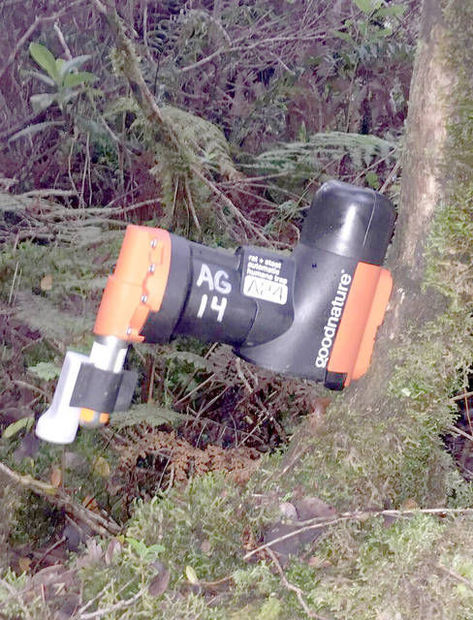KOKEE — Self-resetting rat traps are turning out to be the firepower conservationists needed to help control rat populations on Kauai. And now, the U.S. Army is deploying more than 900 Goodnature A24 self-resetting traps on Oahu to help curb
KOKEE — Self-resetting rat traps are turning out to be the firepower conservationists needed to help control rat populations on Kauai.
And now, the U.S. Army is deploying more than 900 Goodnature A24 self-resetting traps on Oahu to help curb populations in the Waianae and Koolau mountain ranges.
On Kauai, they’ve been useful for boosting seabird populations and decreasing numbers of rats.
“The traps appear to be extremely effective at suppressing rat populations and protecting the native species the rats were harming,” said Kyle Pias of the state Department of Land and Natural Resources Division of Forestry and Wildlife, stationed on Kauai.
The traps are made in New Zealand, and they reset themselves up to 24 times before needing to be reloaded by a human.
The National Tropical Botanical Garden first deployed the Goodnature A24 traps on Kauai in 2013 in the Upper Limahuli Preserve.
The same year, traps were deployed in DOFAW’s Hono O Na Pali Natural Area Reserve.
Kauai Island Utility Cooperative funded the 2013 traps as part of seabird-mitigation efforts.
Self-resetting traps are also being used in large-scale efforts in the Alakai Wilderness Forest Reserve, and for more targeted projects.
“They are starting to be used widely across the island for smaller-scale control efforts, such as protecting individual endangered plants or nesting nene,” said Pias.
Goodnature A24 traps are also being used on Lanai, which has breeding colonies of Hawaiian petrels and two species of Lanai tree snails, as well as endangered plants that are eaten by rats.
“Hawaii has unique flora and fauna, and protecting and maintaining this biodiversity is an important objective for us on Lanai,” said Pulama Lanai DOFAW Wildlife Biologist Rachel Sprague.
She continued: “Through the humane reduction of rats, we hope that we can better protect our imperiled native wildlife from non-native predators like rodents.”
The traps are particularly helpful in terrain like the Na Pali coast, mainly because it lowers the amount of work scientists and conservationists have to accomplish in the tricky landscape, according to small vertebrate pest stabilization specialist Tyler Bogardus.
Bogardus works with the Army’s natural resources program through the Pacific International Center for High Technology Research, administered by the Research Corporation of the University of Hawaii – Pacific Cooperative Studies Unit.
“We work in large expanses of really rugged, mountainous terrain,” Bogardus said. “It’s difficult and time-consuming to hike to these areas to check and reset traditional snap traps.”
He continued: “The automatic lure pump has been crucial. Having a lure that lasts up to six months has made our work easier and cut the labor involved dramatically.”
The Goodnature A24 traps have made work a bit easier for people working on the Na Pali Coast as well, according to DLNR. Numbers of seabirds are reportedly increasing.
At one site prior to the use of the self-resetting traps, 25 percent of seabird burrows were lost to rats, according to the Kauai Endangered Seabird Recovery Project.
After the introduction of the traps in 2013, 2 percent of the burrows in the same site were lost to rats, according to a 2016 KESRP report.
According to the data collected by the Hono Na Pali Natural Area Reserve Seabird Mitigation Project, Goodnatures are about six times more efficient than live cage traps, the next-best trapping method.
“Goodnatures are by far the most effective trapping method for rodents available today,” Pias said.
On Oahu, the Army’s Oahu Natural Resources Program will be finishing installation of the Goodnature A24 traps over the next few months. These traps compliment the 500 self-resetting traps already installed in the Waianae Mountains.


